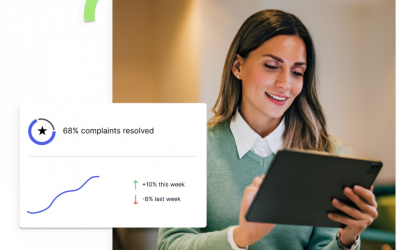The HR department and its operations have seen a lot a transition over the past 25 years. HR has grown from a team that recruits and processes payroll alone, to helping fine tune the resources within the workforce and optimizing productivity by providing insights into HR process areas that previously went untapped. There has always been a certain level of analysis that went on within HR, but never has it been focused on a particular end game as it is today.
Today, the advent of low-cost, multi-platform business intelligence tools has led to efficient, engaging and systematic analysis and reporting that not only serves HR, but all members of the organization responsible for managing people and producing positive results.
HR Metrics versus HR Analytics
HR metrics and HR analytics, although sourced from the same systems, are different from each other. HR metrics refer to numbers and raw data that have been collected and reported by HR on relevant process areas. It is a picture of what happened yesterday within the workforce. HR analytics, on the other hand, applies the data to policy and decision making. Forming workforce strategies based on inter-related data is the real focus of HR analytics. Both are important as you can’t have HR analytics without HR metrics.
Role of HR
There are many ways in which HR can help the organization apply both HR metrics and HR analytics.
Reporting
Relevant reporting is perhaps the most important factor that goes into HR metrics and the resulting analytics. Before reporting can product results, a reporting strategy must be developed based on a few questions of its own. What should be reported? How should the data be reported? When and to whom should these numbers be reported? The role of HR is to identify the relevant metrics that matter most to the organization. HR has to partner with the business managers and know the problems they are facing, then gather and report the data that can create positive effects through transparency, relevancy, and action.
HR Dashboards
HR dashboards are real time aggregates of organizational and workforce data that enrich the reporting process by providing intermittent snapshots and even real time access to information. Often done through charts, tables, pies, and graphs, HR dashboards give managers and decision makers the tools to drill down on current issues, analyze trends, identify root causes, and make it possible to drive change on a micro level. HR dashboards differ from reports in that they are constantly available on demand and provide an interactive means to discover people and workforce trends. Not just what is happening, but why it’s happening.
Benchmarking
Benchmarking provides the organization a means of comparing themselves against internal and external norms. Benchmarks can offer a detailed picture of what is possible and to what extent human capital efficiencies can be leveraged. Measurement and reporting alone are helpful, but without a clear picture of where the organization needs to be (i.e. specific targets), the picture of success lacks clarity. Benchmarks serve as a foundation for establishing targets towards which the organization can drive its human resources and processes, giving much needed clarity to continually excel.
Workforce planning
Workforce planning deals with modeling and predicting the organization’s human capital staffing needs based on the ever-changing aspects of the organization. HR plays an important role by helping business managers think through factors like mergers and acquisition, new products offerings, and shifts in existing product delivery, all through the lens of workforce optimization, staffing, and productivity. Metrics and analytics play a key role here as setting baselines and forecasting out various models from which to optimally fund and apply.
The roles and responsibilities of HR are constantly changing and upgrading as technology evolves. Organizations continue to look to HR for new and innovative ways to maximize their investment in human capital. Workforce analytics is leading the way and the HR analytics team is uniquely poised to serve the business with critical workforce intelligence that never existed 25 years ago.




